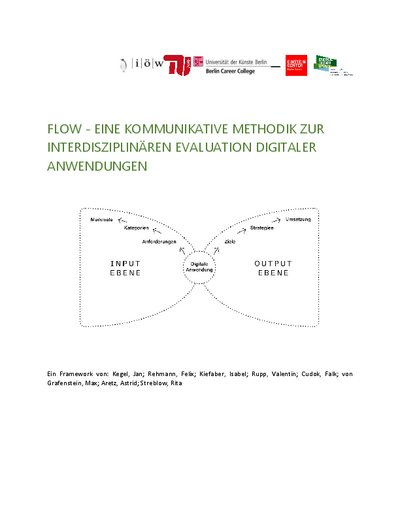FLOW – A communicative methodology for the interdisciplinary evaluation of digital applications
The digitalization of energy technology in buildings and districts is complex. Digital technologies help with the planning, construction, refurbishment, operation, or demolition of properties, for example to use energy and resources more efficiently and to increase comfort for users. The different disciplinary perspectives on a digital application result in several definitions of objectives and requirements. For example, digital tools are often characterized by a positive environmental impact. To achieve this, specific technical requirements are placed on the design of the digital application, which in turn generate ecological and economic expenses. In many cases, personal data must also be collected and used to achieve the objectives, which means that data protection aspects must be taken into account.
The successful implementation of digital applications therefore requires the consideration and involvement of different areas of activity and stakeholders. This working paper presents an interdisciplinary approach that enables different disciplines to better describe and systematize digital applications. The focus of the "FLOW" methodology is on communication and exchange about digital applications across the individual areas of work.
The procedure was developed for the systematic recording and description of digital applications. In principle, the methodology should capture the goals, strategies, implementations, and requirements of digital applications that are used and developed in the research projects of the "Energiewendebauen" research initiative. It became apparent that it would be difficult or even impossible to fully capture these aspects, as research from automation engineers to sociologists encompasses many requirements and concepts. However, in the attempt to fully capture and systematize, the application of the FLOW-framework proved to be extremely suitable for enabling an efficient exchange and understanding of the applications. The methodology therefore proposes an approach that helps to view and discuss a digital application from different perspectives. The aim is to identify blind spots and improve the use or development of the applications.
To make the "FLOW" method more accessible to researchers, there are two further materials in addition to the working paper (all in German):
- a poster template (PDF, DIN A0), which describes the application of the methodology, e.g., for workshops
- an accompanying handout (PDF) describing how to use the poster template.



